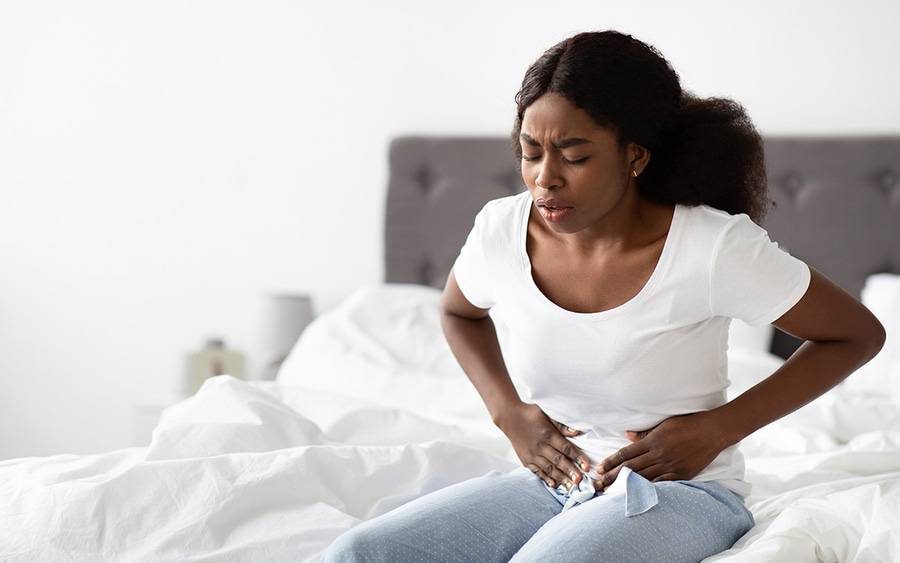Endometriosis: Symptoms, Risk Factors and Treatments
Treatment may include medication, surgery or both

Treatment may include medication, surgery or both
Imagine living with chronic pain that disrupts your daily life, affecting your work, relationships and overall well-being. Now, picture this pain, but not knowing its cause or how to effectively treat it.
This is the unfortunate reality for millions of women living with endometriosis, which is also one of the leading causes of infertility in the United States.
Endometriosis can be difficult to diagnose. Its symptoms overlap with other medical conditions and that can delay an accurate diagnosis. Early treatment can slow or halt the progression of the disease, reducing pain and improving quality of life.
“Fortunately there are several endometriosis treatment options to ease symptoms and improve your quality of life,” says Lily Tsai, MD, an OB-GYN, and minimally invasive gynecologic surgeon at Scripps Clinic Encinitas.
Endometriosis treatment may include lifestyle changes, medication, surgery or all three . When surgery is necessary, it can often be done with both pain reduction and fertility preservation as goals.
“Minimally invasive gynecologic surgery, including robotic and laparoscopic surgery, can remove the tissue associated with the condition and help improve fertility,” Dr. Tsai says. “The removal of the endometriosis implants reduces inflammation that affects overall health.”
What is endometriosis?
Endometriosis occurs when tissue similar to the uterine lining grows outside the uterus. The tissue can grow on other pelvic organs, most often around the ovaries and fallopian tubes.
Endometriosis can cause the formation of cysts, lesions and adhesions and scar tissue. It can cause severe pain, especially during menstruation.
One in 10 women of childbearing age has endometriosis, according to the American College of Obstetricians and Gynecologists. It is most common in women in their 30s and 40s. The risk is also higher if you have:
- Never had children
- Menstrual periods that last more than seven days
- Short menstrual cycles (27 days or fewer)
- A family member with endometriosis
- A health problem that blocks normal flow of menstrual blood
No one knows for certain what causes this disease, but treatments are available to manage symptoms.
What are the symptoms of endometriosis?
The main symptoms of endometriosis are:
- Pelvic pain, often during menstruation
- Pain during or after sex
- Heavy periods
- Chronic lower back and abdominal pain
- Digestive issues, such as diarrhea, constipation or bloating during menstruation
Many women with the condition experience no symptoms at all.
Endometriosis and infertility
Inflammation may damage the sperm or the egg or interfere with their movements through the fallopian tubes and uterus. Infertility affects up to 50 percent of women with endometriosis, according to the National Institutes of Health.
Minimally invasive surgery may be done to relieve pain and improve fertility. In vitro fertilization may be an alternative option.
How is it diagnosed?
Diagnosis involves thorough medical history assessment, a pelvic examination and imaging tests if necessary. In some cases, a minimally invasive procedure called laparoscopy may be required for a definitive diagnosis.
What are treatment options?
Endometriosis treatment depends on several factors, including:
- Age
- Severity of symptoms
- Severity of disease
- Pregnancy plans
- Response and tolerance of medical management
Pain medicine
Medication is usually tried first when pain is the main symptom. Nonsteroidal anti-inflammatory drugs can be used to manage pain. Stronger prescription medications are also available.
Hormone therapy
Hormone treatment can help control pain by suppressing the production of hormones that stimulate endometrial tissue growth. This can include methods like birth control pills, IUDs, injections and more. These are not suitable for women trying to conceive.
Surgical treatments
Doctors may recommend surgery to treat severe pain symptoms, especially when other methods prove ineffective.
Surgery may be a laparoscopy or major surgery.
Laparoscopy is a minimally invasive treatment option for women who plan to get pregnant in the future.
“Like all surgery, minimally invasive surgery has both benefits and risks. So, it’s important to talk to your doctor about all your endometriosis treatment options,” Dr. Tsai says.
What is laparoscopy?
In laparoscopy, the surgeon makes small incisions and inserts a tiny camera and surgical instruments into the body, enabling them to excise and remove lesions.
“The camera projects images onto a video screen that help the surgeon look for the endometriosis and remove it,” Dr. Tsai says.
What is robotic surgery?
Robotic surgery is a minimally invasive procedure with an added layer of technology for better visualization. “In some cases, it enables the surgeon to see tissue that we might have missed with standard laparoscopic views,” Dr. Tsai says.
In addition, the robotic instruments mimic the human hand and wrist and can be turned and rotated for better dexterity and precision. “This greatly expands our ability to perform surgery,” she says.
“Like all surgery, minimally invasive surgery has both benefits and risks. So, it’s important to talk to your doctor about all your endometriosis treatment options,” Dr. Tsai adds.
Hysterectomy
Hysterectomy is usually the last option after other methods have failed, and fertility preservation is not a concern.
There are several types of hysterectomies. Robotic hysterectomy is a minimally invasive procedure that combines the precision of robotic technology with the skills of a trained surgeon.
Natural remedies
Lifestyle changes and natural remedies can help relieve some of the symptoms.
Regular exercise and a lower amount of body fat help decrease the amount of estrogen circulating throughout the body.
Avoiding large amounts of alcohol and caffeine can also help. Both can raise estrogen levels.